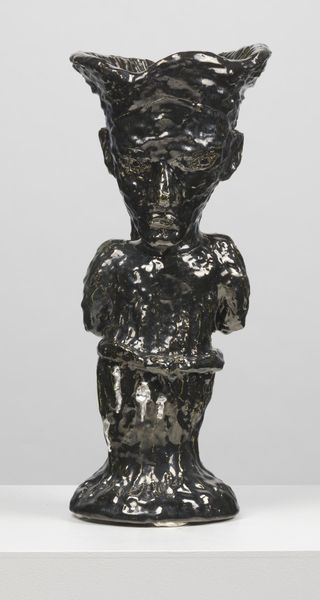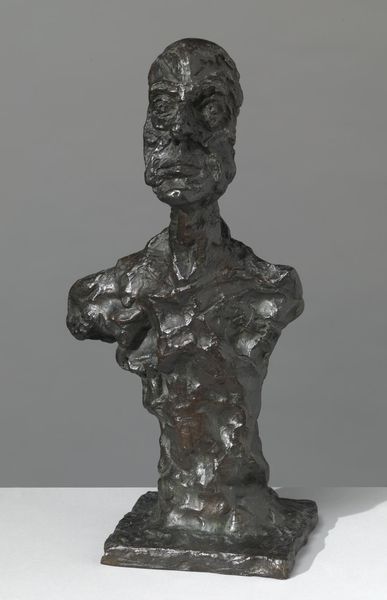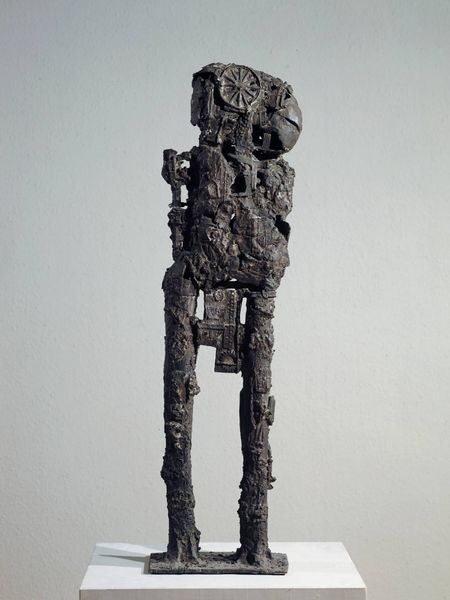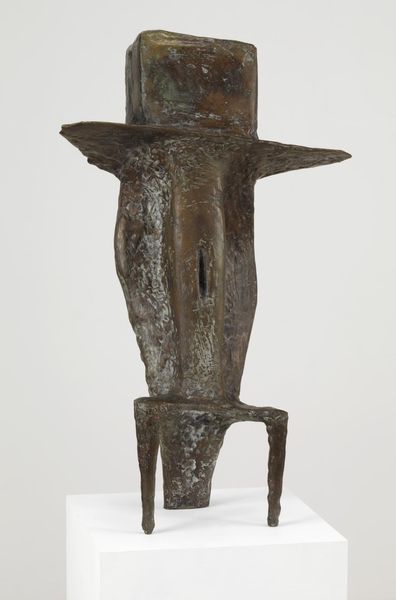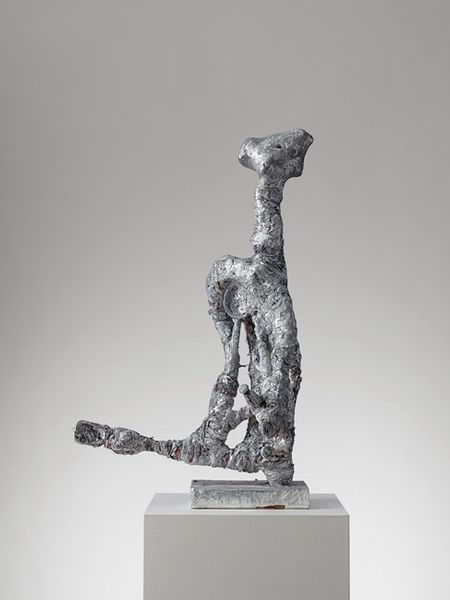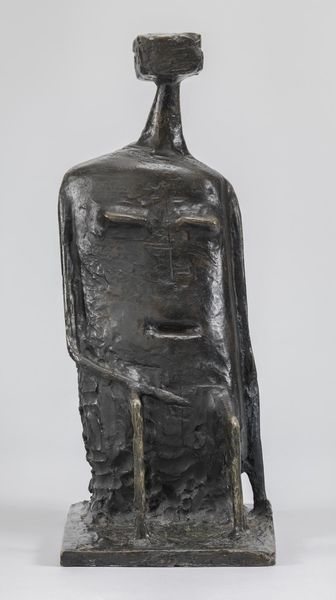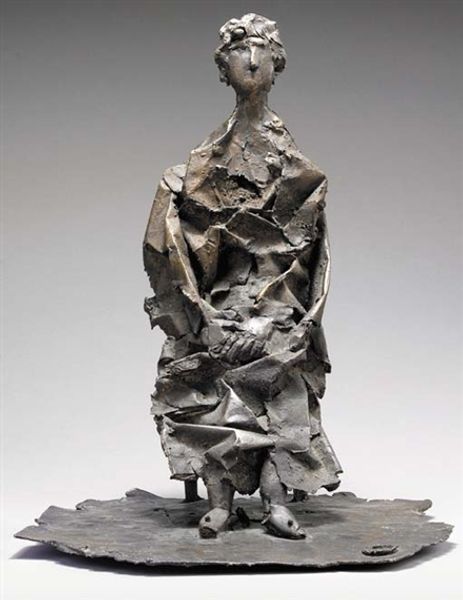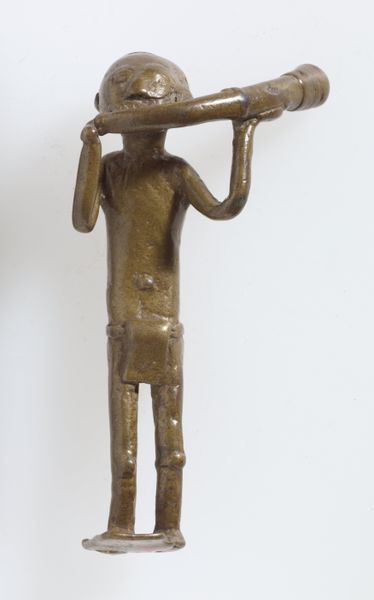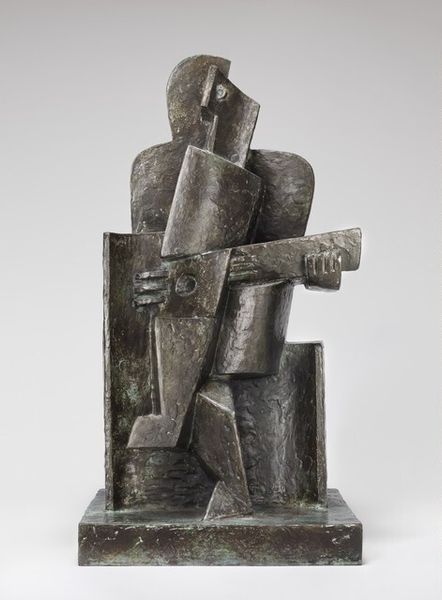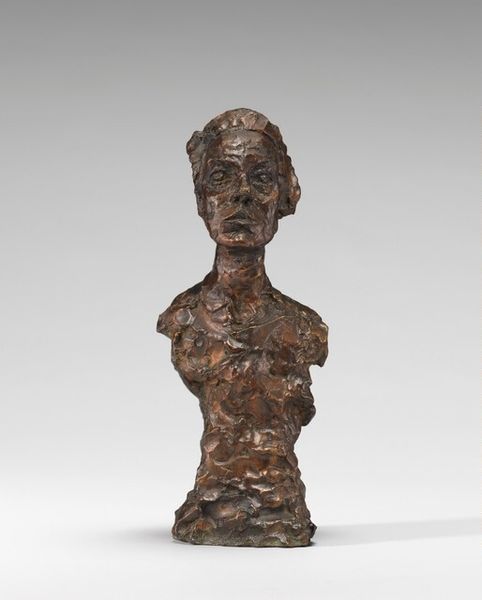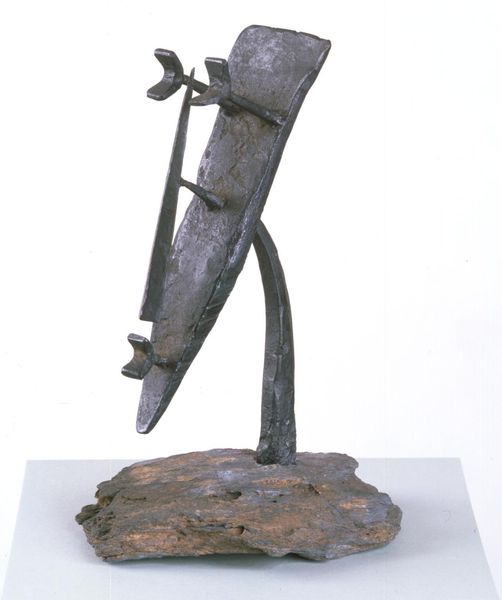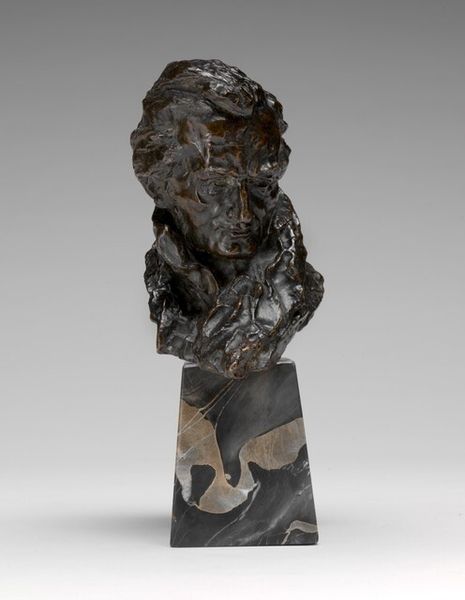
Dimensions: object: 343 x 150 x 135 mm
Copyright: © The Eduardo Paolozzi Foundation | CC-BY-NC-ND 4.0 DEED, Photo: Tate
Editor: This is Sir Eduardo Paolozzi's "Standing Figure" from the Tate Collection. Its rough texture and fragmented form give it a somewhat unsettling presence. What visual symbols are at play here? Curator: Indeed, the roughness is key. Consider the collective memory embedded in bronze: weapons, tools, monuments. Paolozzi evokes this history but disrupts it. Does this fragmented figure suggest a broken monument or perhaps a new kind of idol for the modern age? Editor: A broken monument, definitely! The surface almost looks corroded. Curator: Precisely. The corrosion alludes to time, decay, and perhaps the impermanence of even our most cherished symbols. It’s a powerful statement about cultural memory. Editor: I see it now. The figure embodies a kind of resilience, standing despite its fragmented state. Curator: And it prompts us to question what endures and what fades from our collective consciousness. Thank you for that brilliant observation.
Comments
tate 7 months ago
⋮
http://www.tate.org.uk/art/artworks/paolozzi-standing-figure-t06955
Join the conversation
Join millions of artists and users on Artera today and experience the ultimate creative platform.
tate 7 months ago
⋮
For a while in the late 1950s Paolozzi lived in the Hampstead house of a friend, who was one of the staff in charge of the Institute of Contemporary Arts. He decided that he wanted to try casting his own small bronzes, rather than having to rely upon the formalities of a bronze foundry. Paolozzi set up a small foundry in the back garden of the Hampstead house and cast a handful of small figures, of which this is a significant example. The small figures were modelled in wax and cast directly into bronze via the lost wax casting method. The textured surface of this figure gives it the appearance of an archaeological discovery. Gallery label, September 2004
